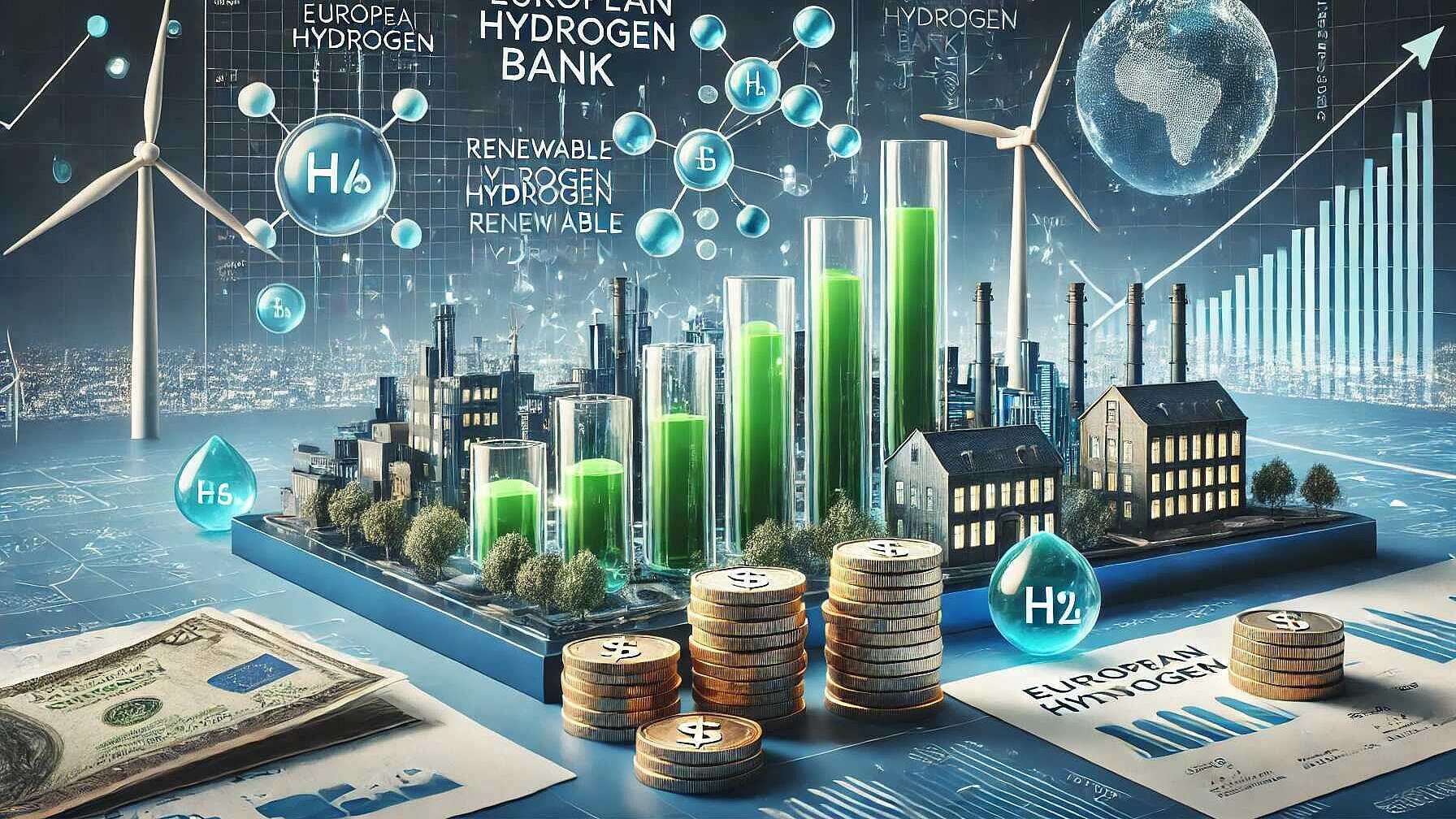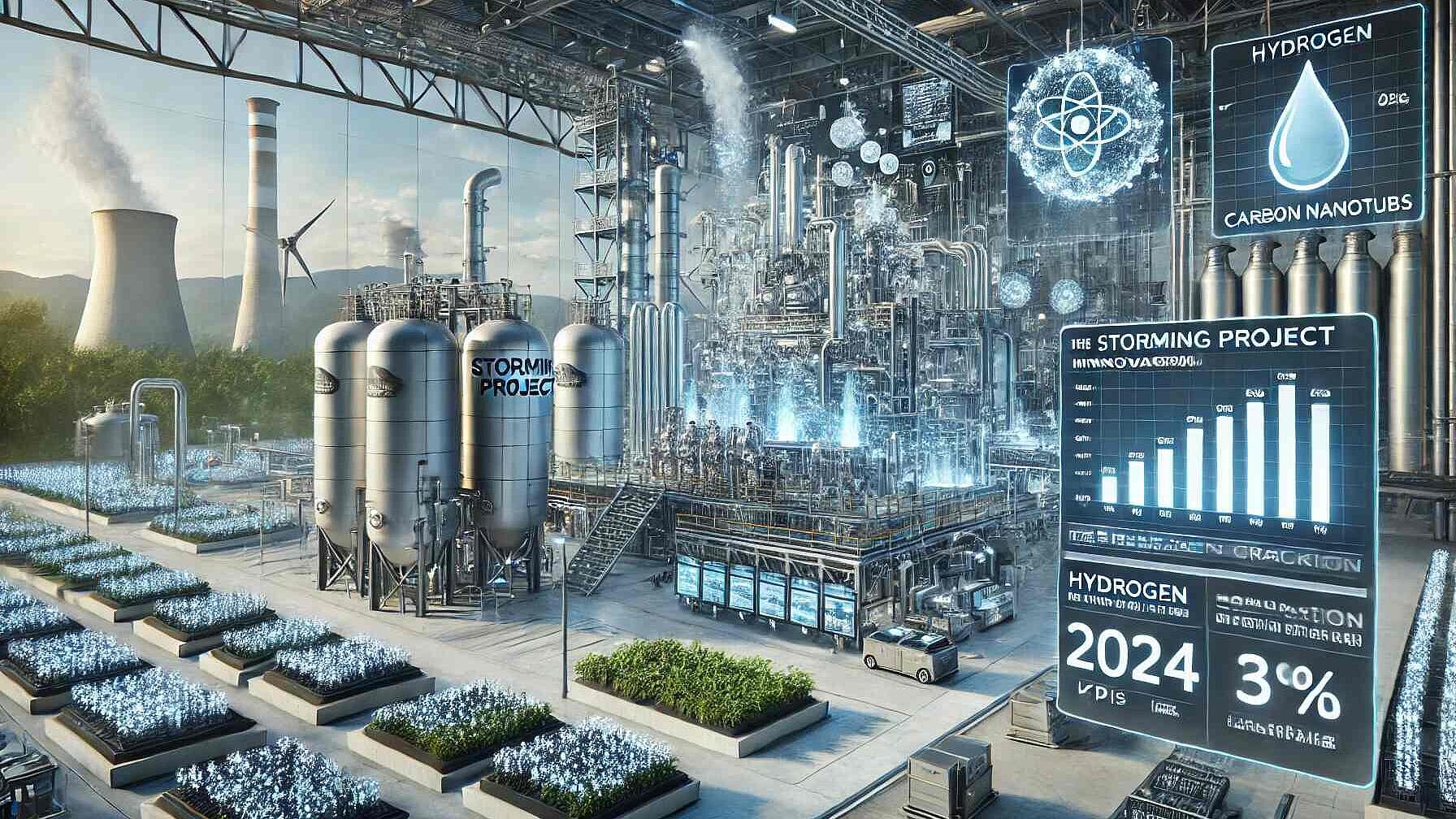 Renewable Energy
Renewable EnergyHydrogen on the Horizon: Shaping the Energy Future
Resumo
Hydrogen is being acknowledged globally as a key component in the transition towards sustainable energy, prompted by its potential to decarbonize sectors dependent on fossil fuels. National hydrogen strategies have been published by twelve countries and the EU, with others drafting their plans, influenced by international events like COP26. Germany, Japan, South Korea, and Australia have distinct approaches to integrating hydrogen based on their unique energy, resource, and economic landscapes.
Technological innovation in hydrogen production is significant, with focus on economic viability and sustainability. Advances explore green hydrogen production from renewables and blue hydrogen from natural gas with carbon capture and storage. Discussions about the classification of hydrogen focus on carbon intensity as a standard of measurement.
The Hydrogen Council estimates that by 2030, low-carbon hydrogen will be competitive in numerous applications. Hydrogen's adoption promises to foster economic growth and job creation in various fields. Yet, the development of a hydrogen economy faces hurdles such as the requirement for massive infrastructure investments and the need for supportive policy frameworks. International collaboration and public-private partnerships are crucial for overcoming these challenges.
The energy sector is currently at an exciting juncture with hydrogen poised to play a transformative role. Opportunities in research, policy-making, and entrepreneurship are vast within the hydrogen economy for professionals and students seeking to contribute to a sustainable future.
Artigo aberto completo
Hydrogen on the Horizon: Shaping the Energy Future
In the midst of the global transition towards sustainable energy, hydrogen is increasingly being recognized as a pivotal player. With governments, corporations, and research institutions exploring its potential, hydrogen is poised to redefine the energy landscape. The ongoing conversation about hydrogen is not just about energy but also about its economic, environmental, and societal implications.
Hydrogen offers an opportunity to decarbonize several hard-to-abate sectors, which traditionally rely heavily on fossil fuels. As countries and industries push towards meeting climate goals, hydrogen stands out due to its versatility. It can power everything from heavy-duty transportation to steel manufacturing while simultaneously producing minimal emissions if sourced sustainably. This dual promise of decarbonization and industrial revitalization makes hydrogen a key part of future energy systems.
The Global Hydrogen Movement
The current state of hydrogen development reveals that we are at an early but highly dynamic stage. As of mid-2021, twelve countries, along with the European Union, have published national hydrogen strategies, and many more are in the process of drafting theirs. This surge in interest can be partially attributed to events like COP26, which have acted as a catalyst for governments to prioritize hydrogen in their energy transitions.
Germany, a leader in the European Union's hydrogen strategy, has placed a heavy emphasis on integrating hydrogen into its industrial framework, particularly in sectors like chemicals and steel manufacturing. Japan and South Korea, both of which have limited domestic energy resources, are pursuing hydrogen as a solution to meet their energy demands. These two countries are investing heavily in decentralized hydrogen production through fuel cells and exploring its application in power generation and transportation.
Australia, on the other hand, focuses on hydrogen production for export, leveraging its vast renewable resources to position itself as a leading exporter of clean hydrogen. This diversity in approach reflects the fact that there is no one-size-fits-all strategy for hydrogen development. Each country tailors its hydrogen efforts based on its unique energy needs, available resources, and economic priorities.
Innovations in Hydrogen Technology
Hydrogen technology is still evolving, with a growing focus on making it both economically viable and environmentally sustainable. Current strategies explore multiple pathways for hydrogen production, including green hydrogen, which is produced using renewable electricity, and blue hydrogen, derived from natural gas coupled with carbon capture and storage (CCS).
The debate over hydrogen’s “color spectrum” has been a significant part of the conversation, as countries and companies attempt to standardize and clarify what constitutes “clean” hydrogen. The EU has been particularly active in this area, pushing for common standards that focus on carbon intensity rather than the traditional color classifications. This shift toward carbon intensity as a metric of cleanliness could simplify the hydrogen debate, enabling clearer guidelines for production and trade.
Notably, the STORMING project aligns with this vision of carbon-free hydrogen production. STORMING’s innovative approach in using renewable electricity to heat structured reactors aims to convert methane into CO2-free hydrogen. This technological breakthrough could accelerate the availability of clean hydrogen while also producing valuable carbon nanomaterials for industries such as battery production, highlighting hydrogen’s multifaceted role in modern energy systems.
Hydrogen's Role in a Sustainable Future
The integration of hydrogen into the global energy mix is expected to have long-lasting effects across various sectors. From heavy industry to transportation, hydrogen presents a pathway to decarbonize sectors that have been historically challenging to clean up. The Hydrogen Council projects that by 2030, low-carbon hydrogen will be cost-competitive in 22 different applications, spanning from energy generation to transportation and industrial processes.
Hydrogen’s role extends beyond mere decarbonization; it is also a catalyst for economic growth and job creation. Many national hydrogen strategies emphasize the potential for hydrogen to generate new industries and create opportunities in sectors like manufacturing, research, and logistics. For students and young professionals, particularly those in engineering, policy, and finance, this evolving landscape presents unique opportunities. The demand for skilled professionals in hydrogen-related fields is expected to grow, offering careers that not only promise innovation but also contribute to global sustainability efforts.
Overcoming Challenges
Despite its promise, hydrogen faces significant challenges. The development of large-scale hydrogen infrastructure—ranging from production facilities to transportation networks—requires substantial investment. Infrastructure costs vary greatly depending on location, technologies used, and the level of public and private support. For instance, Europe, which has limited renewable energy resources in comparison to its energy consumption needs, is focusing on building hydrogen hubs where industrial users can co-locate, reducing infrastructure costs and fostering collaboration across sectors.
Furthermore, policy frameworks play a critical role in the future of hydrogen. Governments around the world are adopting innovative policy tools to incentivize hydrogen development. For example, the European Union’s hydrogen strategy includes measures such as carbon contracts for difference, which can reduce the financial risks for companies investing in low-carbon technologies. Similarly, countries like Canada and Chile are taking steps to support both domestic hydrogen production and the creation of international hydrogen markets. These measures are critical in ensuring that hydrogen becomes an integral part of the global energy economy.
The transition to a hydrogen economy is not just about technological development; it is also about creating the right conditions for market adoption. As countries navigate the complexities of hydrogen integration, public-private partnerships and international collaboration will be essential. These collaborations are already taking shape, with initiatives like Mission Innovation and bilateral agreements between countries such as Germany and Saudi Arabia focusing on hydrogen R&D, infrastructure development, and trade.
Call to Action
For young professionals and students interested in the energy sector, now is the time to engage with the hydrogen economy. Whether through research, entrepreneurship, or policy-making, the opportunities in hydrogen are vast and diverse. The global shift towards clean energy presents a unique chance to contribute to a sustainable future while building a rewarding career.
For those looking to get involved, participating in industry conferences, joining hydrogen research initiatives, or pursuing specialized education in hydrogen technologies can provide a strong entry point. Staying informed on policy developments and technological innovations, such as those coming from projects like STORMING, is also crucial for anyone aiming to play a role in the hydrogen revolution.
Conclusion
Hydrogen is on the cusp of transforming the energy landscape, with the potential to decarbonize industries, power clean transportation, and drive economic growth. The diversity of national hydrogen strategies shows that while there is no singular pathway to hydrogen adoption, the momentum is undeniable. As governments, industries, and innovators continue to push the boundaries of what hydrogen can achieve, the energy sector is set for an exciting transformation,



